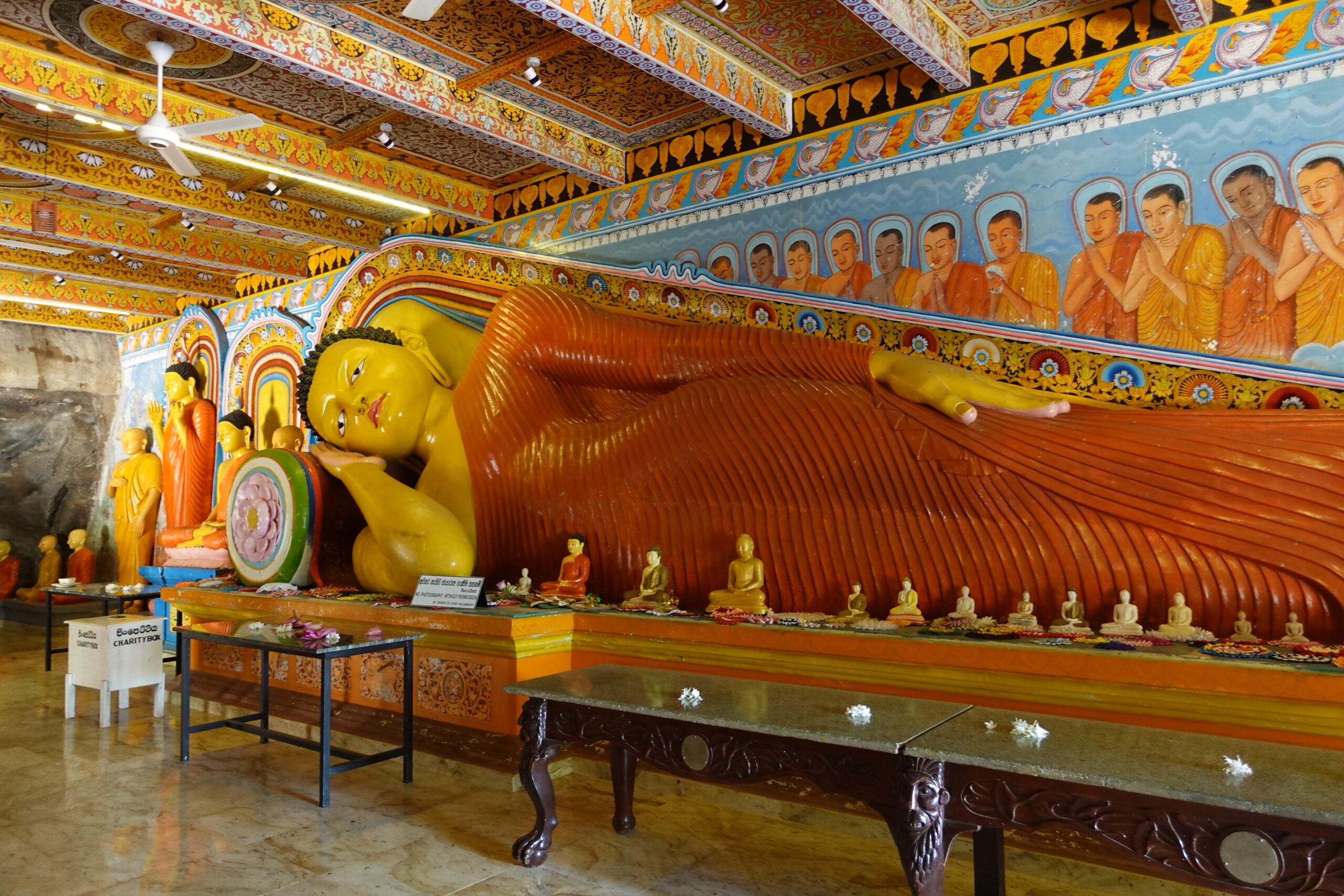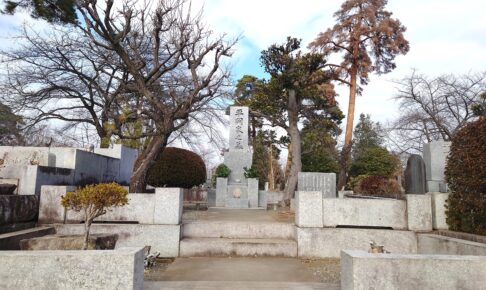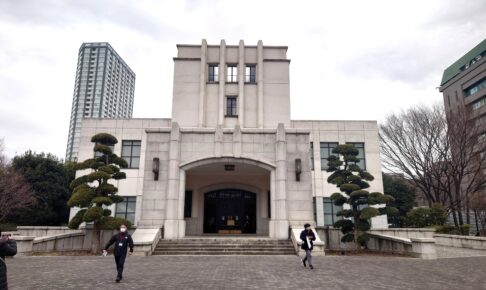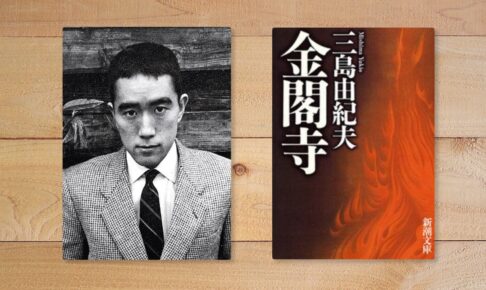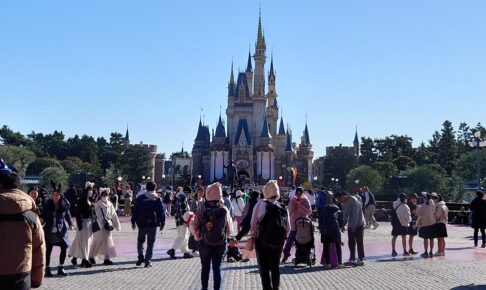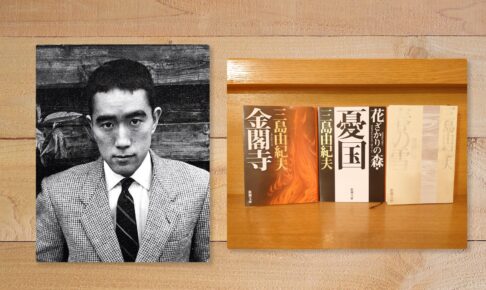(34) What is the background of the Sri Lankan civil war and the rapid revival of Buddhist holy sites - What is the relationship between Sinhala Buddhist nationalism and holy sites?
Previous Article(33) Dharmapala and Sinhala Buddhist nationalism: the major currents of modern Sri Lankan Buddhism."In the following article, I talked about Dharmapala and Sinhala Buddhist nationalism. This article may have confused some of you, as it was a bit of an explanatory article that strayed away from the travelogue itself. However, I would appreciate it if you could bear with me. What I have explained in these articles will surely be useful for you when you read my future travelogues. I hope that you will find these basic knowledge necessary so that you will know what I felt there.
Above all, by learning about the religious situations in Sri Lanka and India, we Japanese can also see what we are like. After all, there are things that can only be seen by comparing them.
Now, let's get to the main part of the article.
As we have seen in previous articles, social conditions in Sri Lanka began to change rapidly with the British rule in the 19th century. The rapid increase in the number of newly emerging elites, Christianity, and English-language education were causing the Sinhalese Buddhists to become increasingly dissatisfied. It was at this time that the Dharmapala emerged.
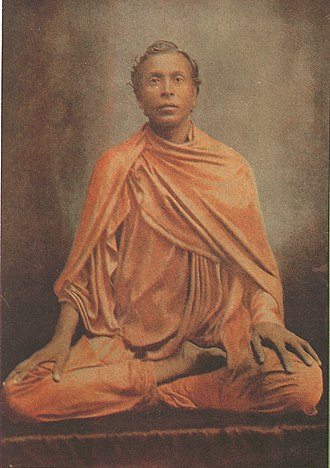
Anagarika Dharmapala (1864-1933)Wikipedia.
Dharmapala advocated Sinhala Buddhist nationalism, and ethnic conflict in Sri Lanka would rapidly intensify here.
Skirmishes and riots began to break out at the end of the 19th century, and by the beginning of the 20th century, many people were killed or injured. Despite this dangerous situation, Sri Lanka finally gained independence from the United Kingdom in 1948. This was the second major event following India's independence in 1947.
But this independence was not just a joyous occasion.
Immediately after India's independence, the conflict between the Hindu-majority and Muslim-majority regions of the country intensified, leading to the division of the country into India and Pakistan. The two countries have been at war ever since, and the conflict is still intense even today.
The same thing was about to happen here in Sri Lanka. Now that the British tag has been removed, the country is in danger of exploding at any moment.
And the decisive factor was the Sinhala-only policy of 1956, a policy of preferential treatment for Sinhalese. The government of the time was a political party that had earned votes under the banner of Sinhala Buddhist nationalism. They passed various preferential policies to further increase the power of the Sinhalese.
The Tamils reacted vehemently to this. This policy, which left the minority Tamils completely outside the mosquito net, was very dangerous for them.
Thus, clashes that were distinctly different from the skirmishes and riots of the past erupted throughout Sri Lanka.
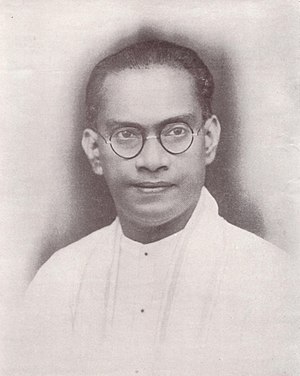
In this dangerous situation, Bandaranayaka, who was the head of the government at the time, moved to withdraw the Sinhala-only policy that he had been propagating, but this withdrawal was now met with fierce opposition from the Sinhala side.
Finally, in 1959, Bandaranayaka was assassinated. He was pistol-shot to death by a monk who espoused Sinhala Buddhist nationalism. The ethnic conflict in Sri Lanka had reached an uncontrollable level.
Bandaranayaka was succeeded by his wife, Sirimawo, who also strongly promoted the Sinhala-only policy.
Thus, the ethnic conflict in Sri Lanka became irreparable. Finally, in 1983, a full-scale civil war broke out. The civil war lasted until 2009, and the death toll is estimated to be at least 100,000.
I can't go into the details of how the civil war broke out, but if you are interested, here is a good introduction to the war by Toshio Shibuya.Sri Lanka Today Magazine.and ...,Fifty-eight chapters in Getting to Know Sri Lanka."I would like to recommend the following
Written by Koji Kawashima for those who want to learn more.Sri Lanka and Ethnicity."andSri Lankan Politics and Caste."Written by Tomoyuki WadaHunt for the Hijackers: Heroes of Sri Lanka" etc.book is recommended.
Now I would like to talk about the "Civil War and Sri Lanka's Buddhist Sacred Sites" mentioned in the title of this article.
It has been noted that the Sinhala-only policy was a policy linked to Sinhala Buddhist nationalism.
And one of the most important projects was the development of a Buddhist sanctuary.
A prime example is.(29) Why wasn't I moved by Sri Lanka's holy sites and Buddhist monuments--thinking about religion and the "context of life?"It is Anuradhapura, which I talked about in the article "Anuradhapura.
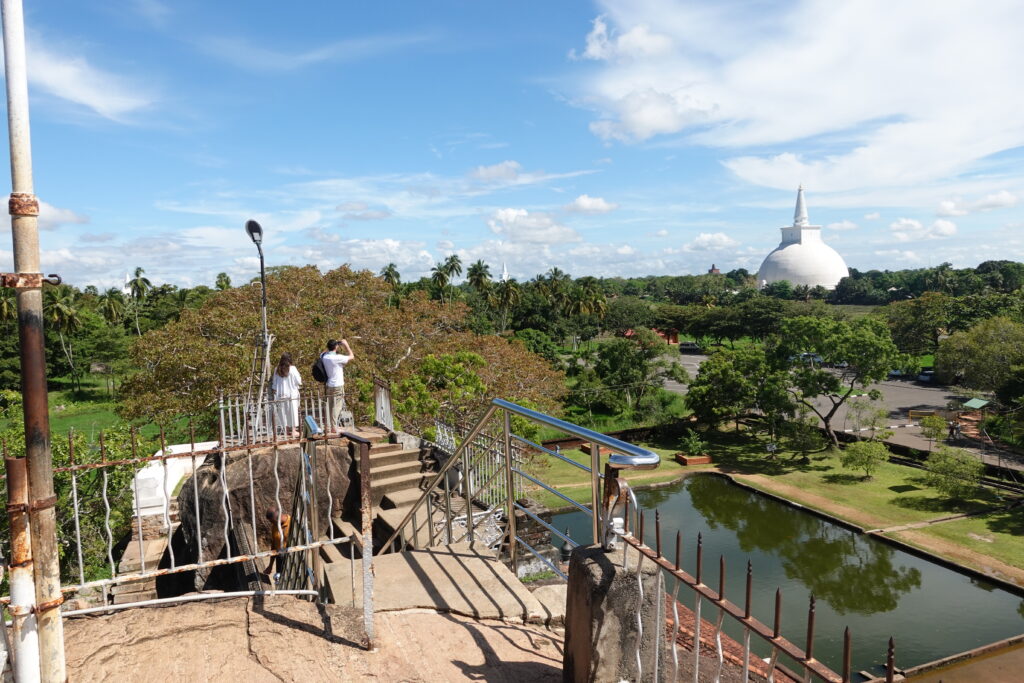
Anuradhapura is famous as the sacred city of Sri Lankan Buddhism, but this Buddhist capital was abandoned as early as 1017 after an attack by the Indian Chola dynasty.
The land became a jungle, almost uninhabitable, and even its existence was forgotten.
Anuradhapura was discovered in the middle of the 19th century, some 800 years later. The site was discovered by the British, who were the ruling power of the country.
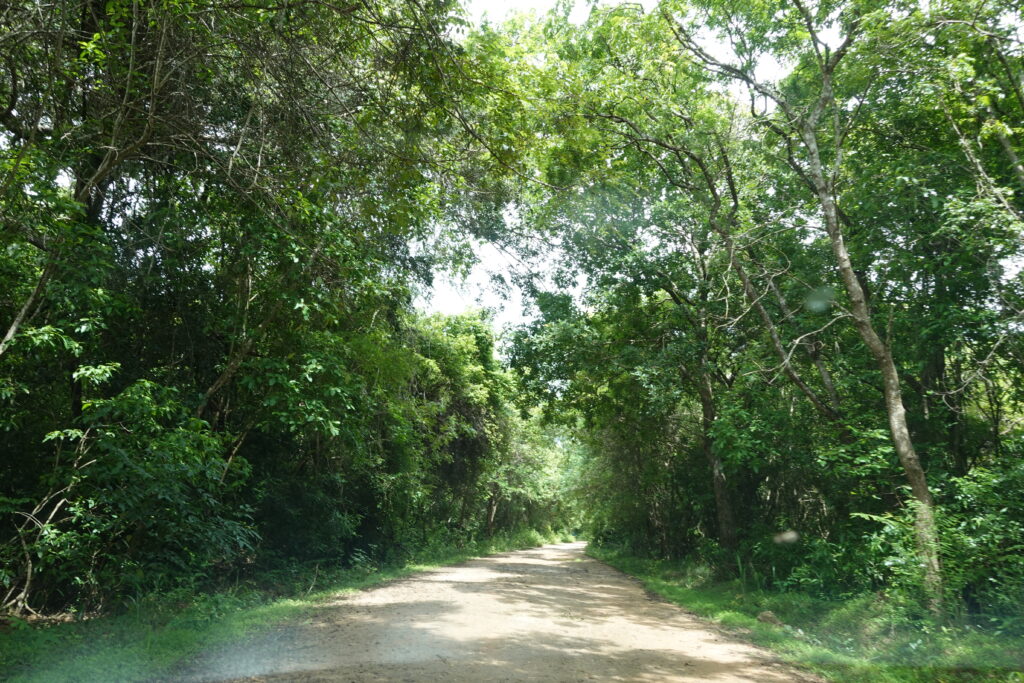
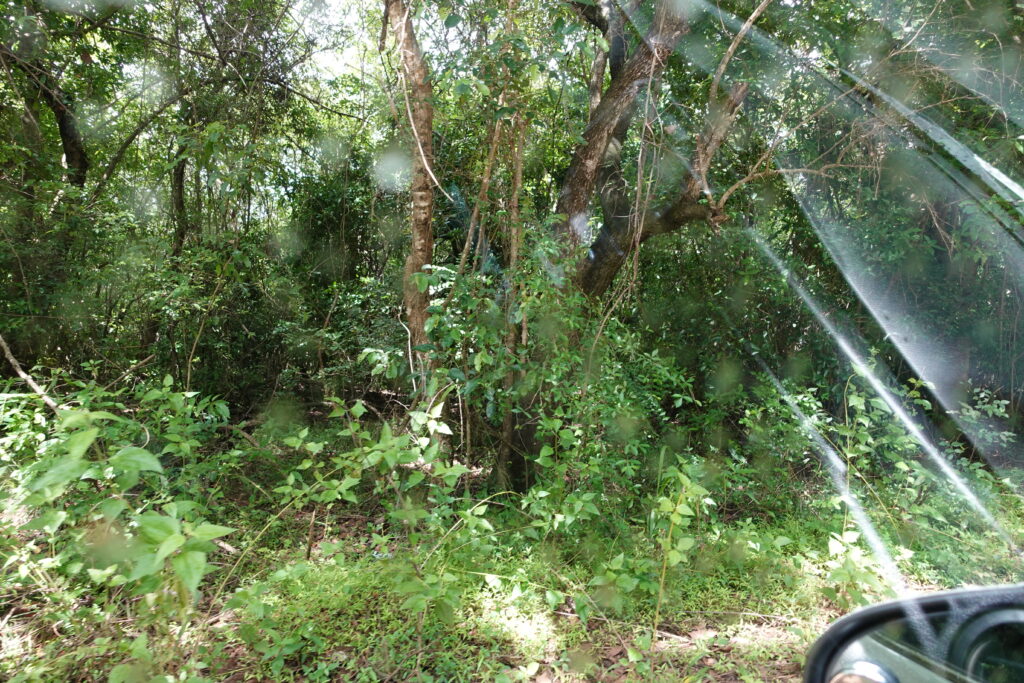
You may be thinking, "That's absurd that it has been forgotten for 800 years," but don't underestimate the jungles of central Sri Lanka. The photo above is of a mountain road near Anuradhapura, but imagine. There is a road like this for cars to drive on now, but in the past, this whole area was covered with deep green. It is so dense that even if you look out of the car window, your view is immediately blocked.
It is too dangerous to go all the way into the jungle where there is no visibility. There are many wild elephants in Sri Lanka. Entering the jungle is a risk to one's life. Few people would have taken such a risk to go all the way into the jungle.
This is especially true in the Kingdom of Candi, where the royal power regarded the jungle as a natural fortress. By daring to leave the jungle as it was, they aimed to block attacks from outside enemies. Moreover, by daring not to build a new road and limiting the invasion routes, ambush attacks were possible, and the defensive advantages were immeasurable.
This is why jungle covered ruins are forgotten.(16) Why have India's Buddhist sites been buried in the ground and forgotten?But as I told you, there is a history of Buddhist sites being forgotten in this way in India as well.
Now, the British began excavation and reconstruction of this site in 1833, but the Sinhalese Buddhist revival movement that began around 1860 led the British to withdraw from the reconstruction of this city.
In 1899, the Dharmapala established a branch of the Mahabodhi Society here and began to promote the area as a Buddhist sanctuary in earnest. After this, redevelopment of the jungle area around Anuradhapura was actively carried out, and many people settled in the area. It was not until the beginning of the 20th century that people began to live in Anuradhapura as we know it today.
Then, the Sinhala-only policy of 1956 led to the rapid development of Buddhist holy sites. Specifically, various policies were implemented, ranging from the direct restoration and reconstruction of devastated ruins to the construction of roads and transportation networks from major cities, as well as the promotion of the area as a pilgrimage and tourist destination.
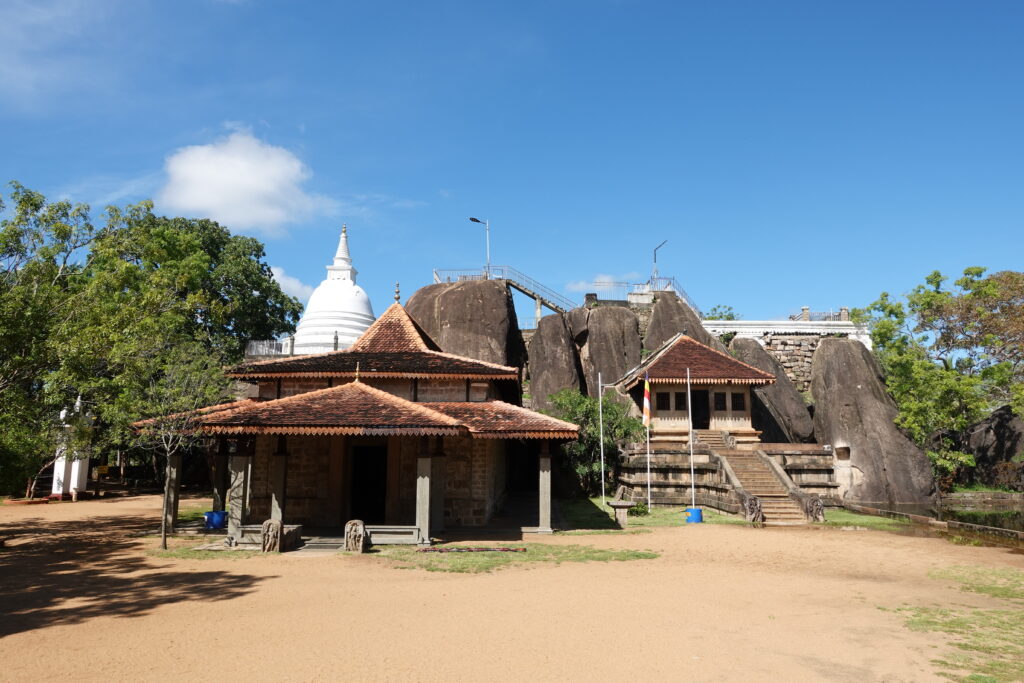
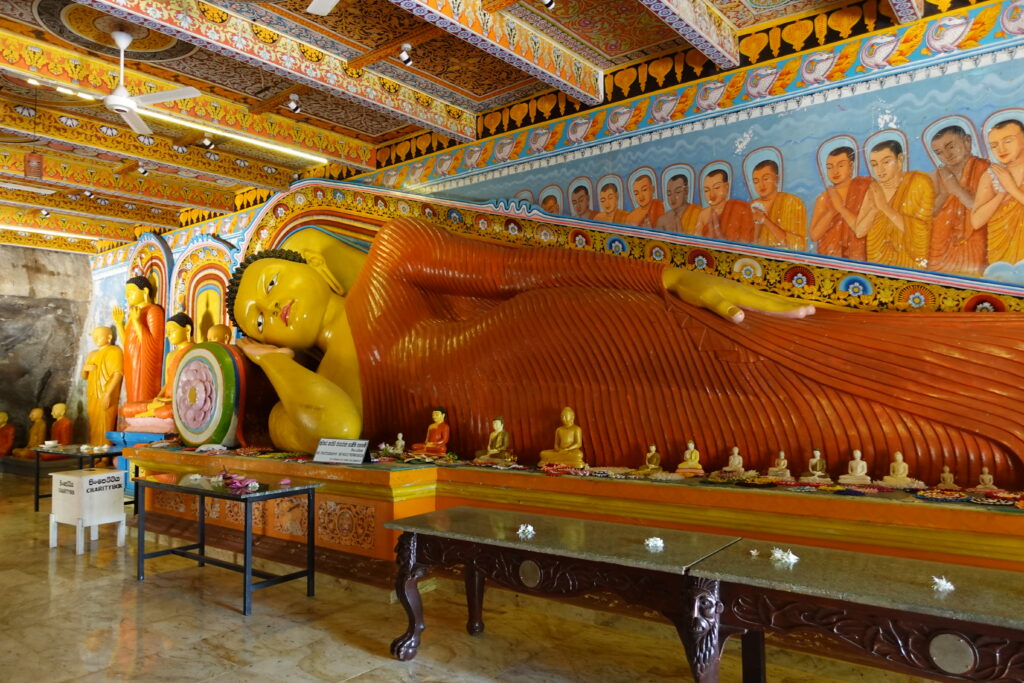
(28) Anuradhapura, the ancient capital of Sri Lanka: A visit to the holy place of Theravada Buddhism where the Bodhi tree from Bodh Gaya stands.The Isulumuniya Seishasya, which I saw in the article "The Isulumuniya Seishasya", was restored in recent years. This is also the reason why the Reclining Buddha inside the temple was unusually new.
And this is not just Anuradhapura. Almost the entire country of Sri Lanka is undergoing this kind of redevelopment.
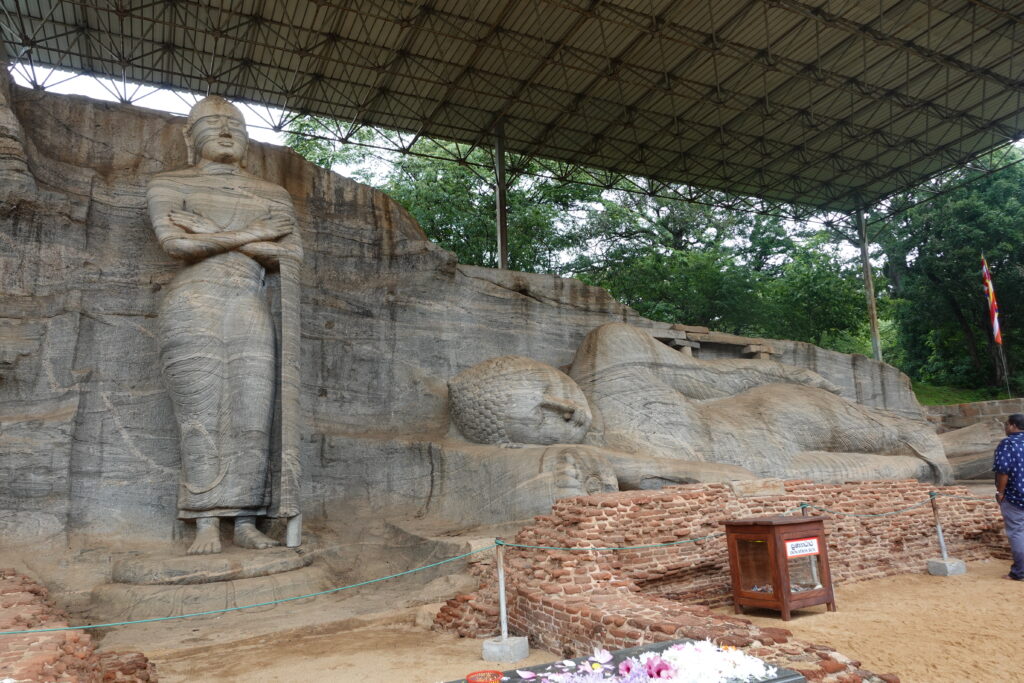
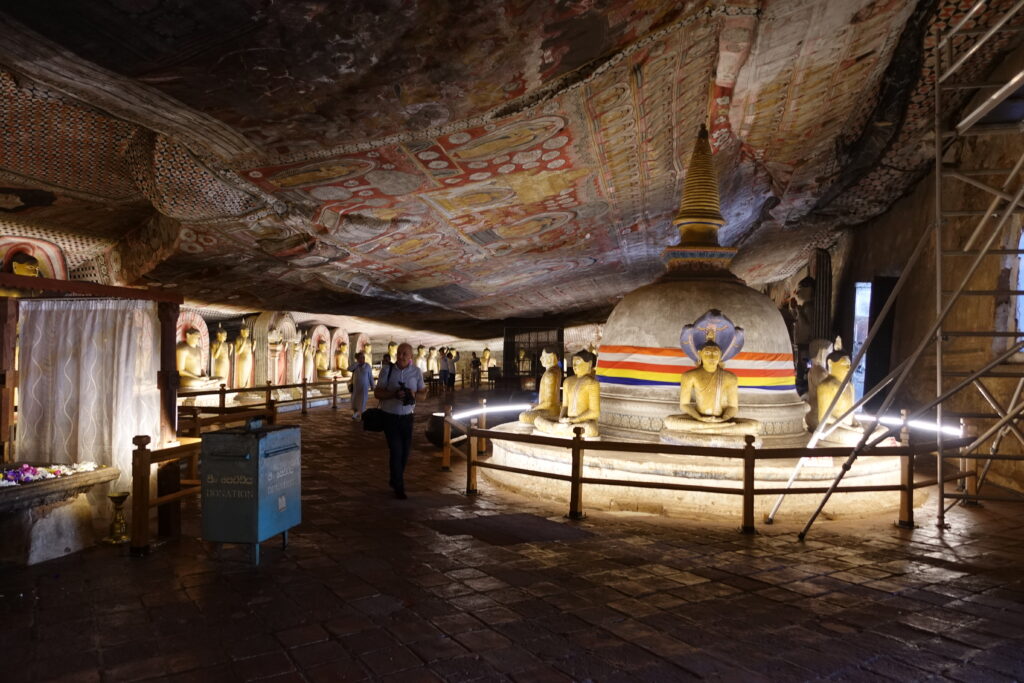
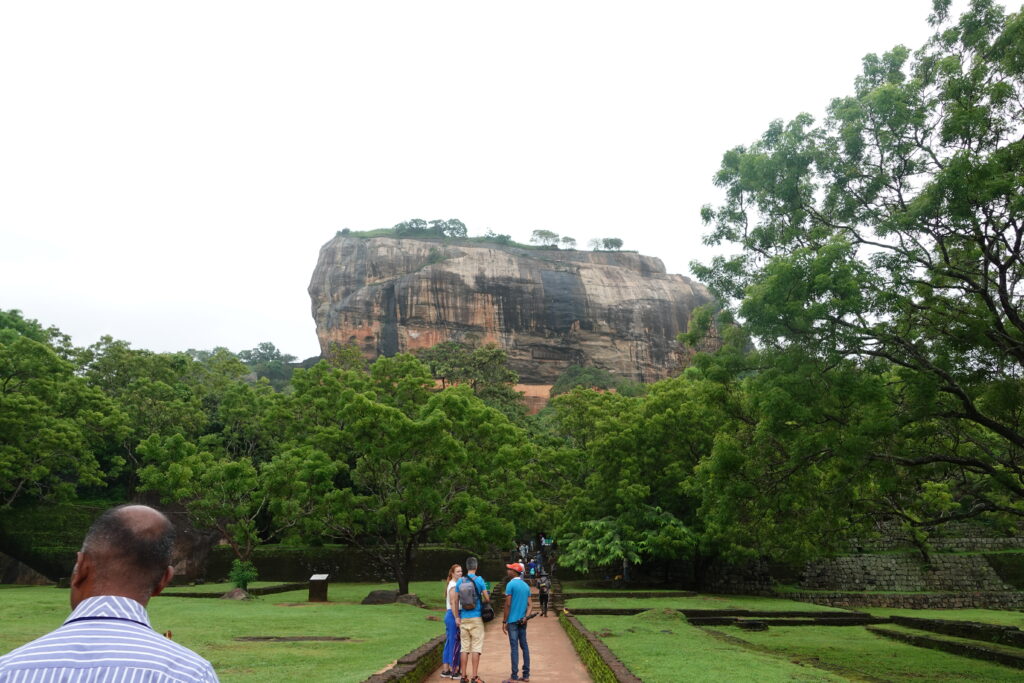
In particular, they revived forgotten ancient ruins such as Anuradhapura, Polonnaruwa, Dambulla, and Sigiriya and marketed them as the "Cultural Triangle" and strongly promoted them as tourism resources to the world. The image of Sri Lanka as a Buddhist country was strengthened by this Sinhala-only policy.
In other words, most of the places currently worshipped as sacred Buddhist sites in Sri Lanka have been re-created by Sinhala Buddhist nationalism in recent years. There is no historical continuity.
This is a point that is difficult for us Japanese to understand and is the root cause of my bitter face in Sri Lanka.(29) Why wasn't I moved by Sri Lanka's holy sites and Buddhist monuments--thinking about religion and the "context of life?"As I mentioned in the article "The Buddha Statues of the past", we tend to place more importance on historical continuity. We appreciate a blackened Buddha statue that has been watching over people's prayers for 1,000 years more than a newly created gilded Buddha statue.
Moreover, whenever I see new temples and Buddhist statues in Sri Lanka, I can't help but think of Sinhala Buddhist nationalism. It seems to me that this is clearly a politically-driven Buddhism rather than a Buddhism that has been created and preserved by people's faith. That is what I meant when I said "Buddhism of the Sinhala people, by the Sinhala people, for the Sinhala people" in the above article.
Of course, not all Sri Lankan Buddhism is like that. The Sinhala Buddhist nationalism led by Dharmapala was supported by a new Buddhism called "Protestant Buddhism," which is different from traditional Sri Lankan Buddhism. This Protestant Buddhism is fundamentally different from the Buddhism of Sri Lanka, which has been handed down from ancient times. This is another complication in Sri Lanka, which I will discuss in a later article.
In this article, I discussed the general trend toward civil war, Sinhala Buddhist nationalism and the restoration of the Holy Land. I am sure that the last few articles have been full of surprises for you. I myself have been astonished by what I have learned about Sri Lanka. I am sure that you have found Sri Lanka to be a very interesting country.
So, let's return to the travelogue again in the next article.
*Below is an article with reference books on India and Sri Lanka that we have referenced in this travelogue. Please refer to them.
periodA list of recommended reference books to help you learn about Indian history, religion, and culture."
periodA list of recommended books for "those who want to know more about Indian Buddhism."
periodA list of recommended books to help you get to know the Buddhist country of Sri Lanka."
Click here to read the previous article.
Related Articles












